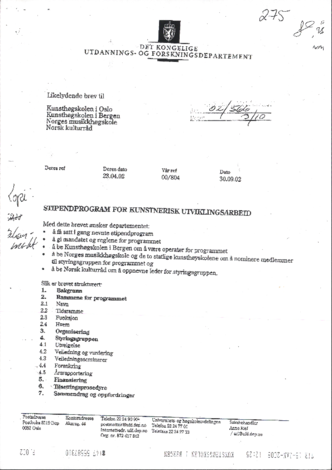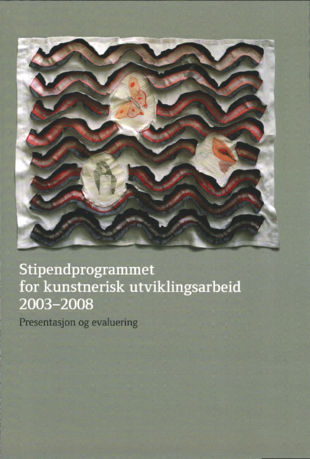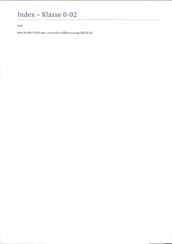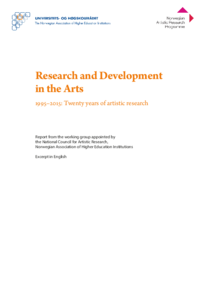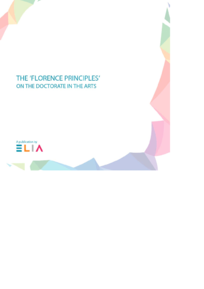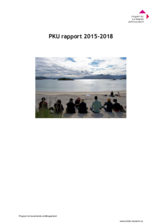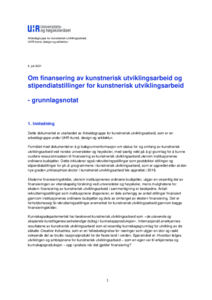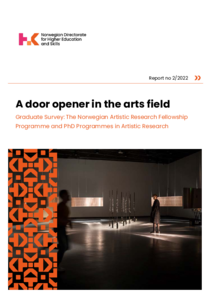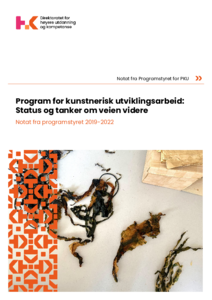The Norwegian Artistic Research Fellowship Programme was established in 2003. In 2018 the programme became part of the Norwegian Agency for Internation Cooperation and Quality Enhancement in Higher Education, which is now the Norwegian Directorate for Higher Education and Skills. In 2018 the first Ph.D. programme in artistic research was established by the Norwegian Academy of Music, followed by similar programmes in several other institutions.
Much of today’s visual and performing art is critically engaged with other life domains, such as gender, globalization, identity, environment or activism; philosophical or psychological issues might be addressed in artistic research projects as well.
The difference between artistic research and social or political science, critical theory or cultural analysis lies in the central place which art practice occupies in both the research process and the research outcome.
This makes research in the arts distinct from that in other academic disciplines engaging with the same issues. In assessing the research, it is important to keep in mind that the specific contribution it makes to our knowledge, understanding, insight and experience lies in the ways these issues are articulated, expressed and communicated through art..
Borgdorff, 2012, p. 57
The Norwegian law defines artistic research
as equal to
scientific research2
Actors3
University of the Arts London - Central Saint Martins:
An inspiration when preparing to establish the Norwegian programme:
- Art and design practices are intellectual pursuits in their own right not requiring translation to other terms in order to have sense and coherence.
- Art and design works embody «meaning» through their interior symbolic languages and syntax (formal organisation).
- Art and design works embody «meaning» through their discursive relationship to other works in their field and their corresponding cultural positions.
- Art and design works can be read by those trained in the subject in the same way that, for example, mathematicians read mathematics or philosophers read philosophy.
Research takes place when a person intends to carry out an original study to enhance knowledge and understanding. It begins with questions or issues that are relevant in the research context, and it employs methods that are appropriate to the research and which ensure the validity and reliability of the research findings. An additional requirement is that the research process and findings be documented and disseminated in appropriate ways.
Borgdorff, 2012, p. 54
The artistic doctoral result must be an independent artistic research project that meets international standards with regard to the level and ethical requirements in the research field.
Artistic practice is at the core of the artistic doctoral result. At the same time, the artistic practice is to be accompanied by an explicit reflection, which, when the project is presented, grants others access into the working methods and insights that emerge from the artistic research.
The artistic doctoral result should be at a level that enables it to contribute to development of new knowledge, insight and experience within the subject area.
The artistic doctoral result may consist of one or several parts which comprise a whole. If the doctoral result consists of several parts, an explanation of how these are interrelated must be included.
Oslo National Adacemy of the Arts (§ 11-1).
NIna Malterud played an important role in the establishing of the Norwegian Artistic Research Programme in 2003, and Trond Lossius was among the first fellows starting in the programme the same year. In this conversation, they talk about the start up period and what the establishing of the PhD programmes in 2018 mean to the artistic research field (recorded January, 6, 2021).
The Norwegian Artistic Research Fellowship Programme is established
by the Ministry of Education and Research
The Quality Reform takes place
(The Bologna process):
Bachelor degrees, Master degrees and PhD degrees (three cycles) are introduced
Sensuous Knowledge
5 conferences
2004-20084
References:
Borgdorff, H. (2012). The Production of Knowledge in Artistic Research.
In The conflict of the faculties: Perspectives on artistic research and academia (pp. 140–173).
Raes, G. W. (2014). Experimental Art as Research.
In D. Crispin & B. Gilmore (Eds.), Artistic Experimentation in Music, An Anthology (pp. 55–60). Leuven: Leuven University Press,
We can justifiably speak of artistic research (‘research in the arts’) when that artistic practice is not only the result of the research, but also its methodological vehicle, when the research unfolds in and through the acts of creating and performing. This is a distinguishing feature of this research type within the whole of academic research.
Borgdorff, 2012, p. 46
The European
Society for Artistic Research
is establieshed
ARTICLE6
The production of knowledge in Artistic Research,
Henk Borgdorrfx
Christo Doherty in conversation with Michael Schwab, the co-initiatior and inaugurial Editor-in-Chief of JAR, in a podcast from Arts Research Africa Dialogue, Wits School of Arts, South-Africa (recorded August, 2020)
The Norwegian Artistic Research Project Programme is
established by the Ministry of
Education and Research
Research Catalogue
An international database for artistic research is launched
Norwegian council for artistic research (NRKU) established as part of Norwegian Association of Higher Education Institution
The main difference between scientific research and research in arts lies in the fact that artistic research does not build up a coherent theory within which and on the basis of which initiatil hypotheses are proves as theses.
Research in art, or experimental art, does not necessarily prove anything. Instead it has to show, demonstrate, and extend possibilities, and, where possible, convince.
Raes, 2014, p. 58
A wider repertoire of methods (to investigate something).
A richer language (to describe something).
Another view or entrance (to understand – or to become aware of your not-understanding - of something).
The Norwegian Academy of Music establishes the first Norwegian PhD programme in Artistic Research
The Oslo National Academy of the Arts
establishes PhD programme
University of Bergen
establishes PhD programme
NTNU establishes
PhD programme
The Norwegian Artistic Research Programme becomes part of the new Norwegian Agency for International Cooperation and Quality Enhancement
in Higher Education (Diku)
Norwegian Association of Higher Education Institution - Art, Design, Architecture (UHR-KDA) established
Christo Doherty discusses new developments in the European space of Artistic Research with Professor Stefan Winter, Head of the Institute of Artistic Research at the Film University Babelsberg KONRAD WOLF in Potsdam, Germany. A podcast from Arts Research Africa Dialogue, Wits School of Arts, South-Africa (recorded October, 2019)
Research fellow number 100 graduates
Diku becomes part of the new
Directorate for higher education
and skills
HK-dir
University of Stavanger and University of Agder establish joint PhD programme
The Norwegian Filmschool establishes PhD programme
The Norwegian Artistic Research Project Programme is
faded out by the Ministry of
Education and Research - the resources are distributed directly to the institutions
| NTNU | 2 200 |
| UiB | 3 500 |
| UiT | 900 |
| NMH | 2 900 |
| HiNN | 700 |
| HiØ | 700 |
| KHiO | 3 100 |
| 14 000 |
